10 facts about the Icelandic Arctic foxThe Arctic Fox is a little-known species, found only in the Arctic. From northern Canada to Greenland, via Alaska, Spitzbergen and Siberia, this little canid has colonised the most extreme and remote regions of our planet. But it’s the Icelandic Arctic Fox that interests us today, as it’s the subject of our photo tour in Iceland.
Iceland has become a popular tourist destination. Despite the masses of tourists and human activity, the Arctic Fox continues to occupy and thrive in Iceland’s remote regions. This is particularly true of the Westfjords, a peninsula in the north-west of the island known for its extreme climate and low human population density. This is where we go to meet them every year, summer and winter. If you’re a wildlife photographer and you’re not familiar with the Icelandic Arctic Fox, here are 10 things you should know about this species.
1. How did the Arctic Fox arrive in Iceland?
It’s a question we’re often asked: how did the Icelandic Arctic Fox arrive on the island?
To understand, we first need to make a trip back in time. The last ice age, which began 115,000 years ago, ended 11,700 years ago. During this period, ice covered a large part of Europe and glaciers stretched as far as the Netherlands and northern Germany. In fact, the North Atlantic, where Iceland is located, was largely frozen over. This ice pack enabled the Arctic Fox to colonise Iceland.
When the earth warmed up and the pack ice melted, the polar bears left the island, as they could no longer hunt seals there. The Arctic Fox became Iceland’s only land mammal!
During this ice age, sea levels dropped considerably (by up to 120m less than they are today). This drop even exposed the land of Beringia, better known as the Bering Strait. This strait links Asia to America. During this period, animals and humans were able to travel between America and Asia.
2. There are Arctic Foxes in different colours
What colour is the Icelandic Arctic Fox?
Throughout the Arctic (Canada, Greenland, Siberia…) there are two types of Arctic Fox: the white Arctic Fox and the brown Arctic Fox. These are two variants of the same species. But white foxes make up 80% of the population. Their camouflage allows them to have a higher survival and reproduction rate than brown foxes.
Given that Iceland is a single island, the Arctic Fox populations turn out to be different. To understand this difference, we need to imagine an environment made up of volcanoes and basalt rock. This rock is dark, unlike the snow and Arctic ice that are usually the fox’s environment. Arctic Foxes have adapted to live in Iceland. This is why 80% of Icelandic foxes are now brown.
However, it is not uncommon to come across white foxes in Iceland. In the Hornstrandir nature reserve, where our photo workshop takes place, we observe and photograph white Icelandic Arctic Foxes every year.
3. The Icelandic Arctic Fox has adapted to its environment
When Arctic Fox arrived in Iceland, they were faced with an unprecedented situation, with the absence of lemmings and rodents. What’s more, the absence of polar bears, whose prey benefits the foxes, removes another source of food.
The Icelandic Arctic Fox has adapted to this new environment by adopting a diet consisting of seabirds, dead animals washed up by the ocean and crustaceans and molluscs. In other words, it has turned to the ocean and its rich resources.
In fact, the rhythm of the tides has become important for the Icelandic Arctic Fox. During our photo tour in Iceland, we got into the habit of photographing the Arctic Fox at low tide, as it walked along the coast in search of food. We have even found dolphins and seals washed up on beaches, which have made Arctic Foxes and ravens happy.
In conclusion, the Arctic Fox has adapted its diet to Iceland, demonstrating once again just how resilient and opportunistic foxes are.
4. The Icelandic Arctic Fox is a cliff and beach animal
As the Arctic Fox has had to adapt its diet to its new environment, it can be found in two areas in Iceland: the cliffs where seabirds nest and the beaches where the ocean washes up dead animals that are accessible at low tide.
Cliff foxes enjoy very rich territories, where the resource is inexhaustible. To take advantage of this resource, the Icelandic Arctic Fox has acquired the ability to descend the steepest cliffs and access the nests. These vertiginous hunting scenes are impressive to observe and photograph.
Beach foxes, which are less well off than their cliff-dwelling neighbours, depend on what the ocean has to offer. In other words, the food available is unpredictable.
This information is essential for taking Arctic Fox photos in Iceland. There is no point in going to the mountains, inland for example, as the chance of encountering an Arctic Fox is very low.
5. The Icelandic Arctic Fox has litters of 3 to 12 cubs.
The litter size of Icelandic Arctic Foxes can vary considerably depending on the situation, from families with 3 cubs to families with 12 cubs. The main factor of variation is the type of territory.
As explained above, cliff foxes are much better off than beach foxes. As a result, they are able to feed larger litters. It is not uncommon to come across litters of 12 cubs on cliff territories, whereas on beaches, litters do not exceed 3 or 4 cubs.
Cette information est très importante, car cela signifie par exemple que les renards des plages sont plus sensibles au dérangement. Les interactions avec les humains doivent alors être limitées pour leur permettre de trouver de la nourriture et de nourrir leurs petits.
6. The highest density of Arctic Fox in the world is in Hornstrandir
Hornstrandir is a veritable Arctic Fox paradise in Iceland. This refuge, where hunting is banned, has the highest density of Arctic Foxes in the world!
The Arctic Fox almost became extinct in Iceland in the 1970s. So much so that the population fell below 1,000 individuals. Today, thanks in particular to its protected status in the Hornstrandir nature reserve, the Icelandic Arctic Fox population is estimated at between 7,000 and 10,000 individuals.
Hornstrandir Arctic Fox population is the densest in the world, but it is also a stable population. Predators are generally territorial animals. That’s why there can’t be more foxes than territories available in the reserve. So what happens to the foxes that don’t have a territory? They generally leave to colonise the Westfjords and the rest of Iceland. In conclusion, Hornstrandir is a kind of reservoir that guarantees the survival of Iceland’s Arctic Foxes.
7. The Icelandic Arctic Fox has no predator
In colonising Iceland, the Arctic Fox has executed a perfect plan: find an island with abundant prey and no other predators!
The polar bears left Iceland at the end of the last ice age. Foxes therefore lived on the island for around 10,000 years without any predators. A dream situation until the arrival of the first humans on the island: the Vikings! The Icelandic Arctic Fox then once again found itself predated by humans, who hunted it mainly for its fur.
Finally, it should be pointed out that we regularly see eagles or ravens eating foxes. But in this case, the fox was already dead. As these predators are also scavengers, they do not hesitate to eat dead foxes.
8. Some fox dens have been in use for 300 years
The Arctic Fox’s only refuge from bad weather and danger is its burrow. Arctic Foxes use their dens from generation to generation, improving their inhabitants every year. Some dens, over 3 centuries old, have up to 150 entrances and exits.
In their dens, Icelandic Arctic Foxes can survive for several weeks without food. This is the technique they use to limit their energy expenditure in winter, during storms and in extreme conditions. They only come out of their dens when absolutely necessary. That’s why it’s so important for foxes to eat enough during the summer and build up their fat reserves (which can amount to 50% of their body weight).
In Iceland, these historic dens are unfortunately known to hunters, which facilitates predation and endangers the species.
9. Arctic Foxes survive extreme temperatures
Arctic Fox fur is one of the most effective in the animal kingdom! It allows it to withstand temperatures of around -50°C. A quick comparison between the red fox and the Arctic Fox shows that the latter has physically adapted to the extreme conditions: its ears and muzzle are shorter to limit heat loss, its size is smaller to limit energy requirements and its paws are covered in fur, including underneath, to protect it from the cold.
Finally, Arctic Foxes are also in the habit of rolling up in a ball to protect themselves from the wind. By tucking their heads behind their thickly furred tails, they are better able to retain heat.
10. The Arctic Fox population in Iceland does not vary
Unlike other Arctic regions, where the Arctic Fox depends mainly on lemmings, the Icelandic Arctic Fox feeds primarily on seabirds. This is an important difference! In other words, they have a cycle with periods of abundance and high reproduction, and periods of scarcity and low reproduction. These cycles inevitably have an impact on Arctic Foxes, which reproduce very little during periods of scarcity, due to the lack of lemmings to feed their young.
In Iceland, foxes that feed on seabirds do not experience these variations. Every year, the Arctic Fox occupies the same territories, benefits from the same prey (seabirds) and reproduces to a greater or lesser extent depending on the richness of the territory.
In short, Iceland is the Arctic Fox’s dream territory! Prey is systematically abundant and periods of dearth are rare.
Conclusion
As you can see, the Icelandic Arctic Fox is a species that has adapted to a new environment to take advantage of the richness of Icelandic nature. We are passionate about this species and offer photo tours in Iceland. If you would like to join us on our adventures, please contact us using the form.
The Arctic Fox is a little-known species, found only in the Arctic. From northern Canada to Greenland, via Alaska, Spitzbergen and Siberia, this little canid has colonised the most extreme and remote regions of our planet. But it’s the Icelandic Arctic Fox that interests us today, as it’s the subject of our photo tour in Iceland.
Iceland has become a popular tourist destination. Despite the masses of tourists and human activity, the Arctic Fox continues to occupy and thrive in Iceland’s remote regions. This is particularly true of the Westfjords, a peninsula in the north-west of the island known for its extreme climate and low human population density. This is where we go to meet them every year, summer and winter. If you’re a wildlife photographer and you’re not familiar with the Icelandic Arctic Fox, here are 10 things you should know about this species.
1. How did the Arctic Fox arrive in Iceland?
It’s a question we’re often asked: how did the Icelandic Arctic Fox arrive on the island?
To understand, we first need to make a trip back in time. The last ice age, which began 115,000 years ago, ended 11,700 years ago. During this period, ice covered a large part of Europe and glaciers stretched as far as the Netherlands and northern Germany. In fact, the North Atlantic, where Iceland is located, was largely frozen over. This ice pack enabled the Arctic Fox to colonise Iceland.
When the earth warmed up and the pack ice melted, the polar bears left the island, as they could no longer hunt seals there. The Arctic Fox became Iceland’s only land mammal!
During this ice age, sea levels dropped considerably (by up to 120m less than they are today). This drop even exposed the land of Beringia, better known as the Bering Strait. This strait links Asia to America. During this period, animals and humans were able to travel between America and Asia.
2. There are Arctic Foxes in different colours
What colour is the Icelandic Arctic Fox?
Throughout the Arctic (Canada, Greenland, Siberia…) there are two types of Arctic Fox: the white Arctic Fox and the brown Arctic Fox. These are two variants of the same species. But white foxes make up 80% of the population. Their camouflage allows them to have a higher survival and reproduction rate than brown foxes.
Given that Iceland is a single island, the Arctic Fox populations turn out to be different. To understand this difference, we need to imagine an environment made up of volcanoes and basalt rock. This rock is dark, unlike the snow and Arctic ice that are usually the fox’s environment. Arctic Foxes have adapted to live in Iceland. This is why 80% of Icelandic foxes are now brown.
However, it is not uncommon to come across white foxes in Iceland. In the Hornstrandir nature reserve, where our photo workshop takes place, we observe and photograph white Icelandic Arctic Foxes every year.
3. The Icelandic Arctic Fox has adapted to its environment
When Arctic Fox arrived in Iceland, they were faced with an unprecedented situation, with the absence of lemmings and rodents. What’s more, the absence of polar bears, whose prey benefits the foxes, removes another source of food.
The Icelandic Arctic Fox has adapted to this new environment by adopting a diet consisting of seabirds, dead animals washed up by the ocean and crustaceans and molluscs. In other words, it has turned to the ocean and its rich resources.
In fact, the rhythm of the tides has become important for the Icelandic Arctic Fox. During our photo tour in Iceland, we got into the habit of photographing the Arctic Fox at low tide, as it walked along the coast in search of food. We have even found dolphins and seals washed up on beaches, which have made Arctic Foxes and ravens happy.
In conclusion, the Arctic Fox has adapted its diet to Iceland, demonstrating once again just how resilient and opportunistic foxes are.
4. The Icelandic Arctic Fox is a cliff and beach animal
As the Arctic Fox has had to adapt its diet to its new environment, it can be found in two areas in Iceland: the cliffs where seabirds nest and the beaches where the ocean washes up dead animals that are accessible at low tide.
Cliff foxes enjoy very rich territories, where the resource is inexhaustible. To take advantage of this resource, the Icelandic Arctic Fox has acquired the ability to descend the steepest cliffs and access the nests. These vertiginous hunting scenes are impressive to observe and photograph.
Beach foxes, which are less well off than their cliff-dwelling neighbours, depend on what the ocean has to offer. In other words, the food available is unpredictable.
This information is essential for taking Arctic Fox photos in Iceland. There is no point in going to the mountains, inland for example, as the chance of encountering an Arctic Fox is very low.
5. The Icelandic Arctic Fox has litters of 3 to 12 cubs.
The litter size of Icelandic Arctic Foxes can vary considerably depending on the situation, from families with 3 cubs to families with 12 cubs. The main factor of variation is the type of territory.
As explained above, cliff foxes are much better off than beach foxes. As a result, they are able to feed larger litters. It is not uncommon to come across litters of 12 cubs on cliff territories, whereas on beaches, litters do not exceed 3 or 4 cubs.
Cette information est très importante, car cela signifie par exemple que les renards des plages sont plus sensibles au dérangement. Les interactions avec les humains doivent alors être limitées pour leur permettre de trouver de la nourriture et de nourrir leurs petits.
6. The highest density of Arctic Fox in the world is in Hornstrandir
Hornstrandir is a veritable Arctic Fox paradise in Iceland. This refuge, where hunting is banned, has the highest density of Arctic Foxes in the world!
The Arctic Fox almost became extinct in Iceland in the 1970s. So much so that the population fell below 1,000 individuals. Today, thanks in particular to its protected status in the Hornstrandir nature reserve, the Icelandic Arctic Fox population is estimated at between 7,000 and 10,000 individuals.
Hornstrandir Arctic Fox population is the densest in the world, but it is also a stable population. Predators are generally territorial animals. That’s why there can’t be more foxes than territories available in the reserve. So what happens to the foxes that don’t have a territory? They generally leave to colonise the Westfjords and the rest of Iceland. In conclusion, Hornstrandir is a kind of reservoir that guarantees the survival of Iceland’s Arctic Foxes.
7. The Icelandic Arctic Fox has no predator
In colonising Iceland, the Arctic Fox has executed a perfect plan: find an island with abundant prey and no other predators!
The polar bears left Iceland at the end of the last ice age. Foxes therefore lived on the island for around 10,000 years without any predators. A dream situation until the arrival of the first humans on the island: the Vikings! The Icelandic Arctic Fox then once again found itself predated by humans, who hunted it mainly for its fur.
Finally, it should be pointed out that we regularly see eagles or ravens eating foxes. But in this case, the fox was already dead. As these predators are also scavengers, they do not hesitate to eat dead foxes.
8. Some fox dens have been in use for 300 years
The Arctic Fox’s only refuge from bad weather and danger is its burrow. Arctic Foxes use their dens from generation to generation, improving their inhabitants every year. Some dens, over 3 centuries old, have up to 150 entrances and exits.
In their dens, Icelandic Arctic Foxes can survive for several weeks without food. This is the technique they use to limit their energy expenditure in winter, during storms and in extreme conditions. They only come out of their dens when absolutely necessary. That’s why it’s so important for foxes to eat enough during the summer and build up their fat reserves (which can amount to 50% of their body weight).
In Iceland, these historic dens are unfortunately known to hunters, which facilitates predation and endangers the species.
9. Arctic Foxes survive extreme temperatures
Arctic Fox fur is one of the most effective in the animal kingdom! It allows it to withstand temperatures of around -50°C. A quick comparison between the red fox and the Arctic Fox shows that the latter has physically adapted to the extreme conditions: its ears and muzzle are shorter to limit heat loss, its size is smaller to limit energy requirements and its paws are covered in fur, including underneath, to protect it from the cold.
Finally, Arctic Foxes are also in the habit of rolling up in a ball to protect themselves from the wind. By tucking their heads behind their thickly furred tails, they are better able to retain heat.
10. The Arctic Fox population in Iceland does not vary
Unlike other Arctic regions, where the Arctic Fox depends mainly on lemmings, the Icelandic Arctic Fox feeds primarily on seabirds. This is an important difference! In other words, they have a cycle with periods of abundance and high reproduction, and periods of scarcity and low reproduction. These cycles inevitably have an impact on Arctic Foxes, which reproduce very little during periods of scarcity, due to the lack of lemmings to feed their young.
In Iceland, foxes that feed on seabirds do not experience these variations. Every year, the Arctic Fox occupies the same territories, benefits from the same prey (seabirds) and reproduces to a greater or lesser extent depending on the richness of the territory.
In short, Iceland is the Arctic Fox’s dream territory! Prey is systematically abundant and periods of dearth are rare.
Conclusion
As you can see, the Icelandic Arctic Fox is a species that has adapted to a new environment to take advantage of the richness of Icelandic nature. We are passionate about this species and offer photo tours in Iceland. If you would like to join us on our adventures, please contact us using the form.

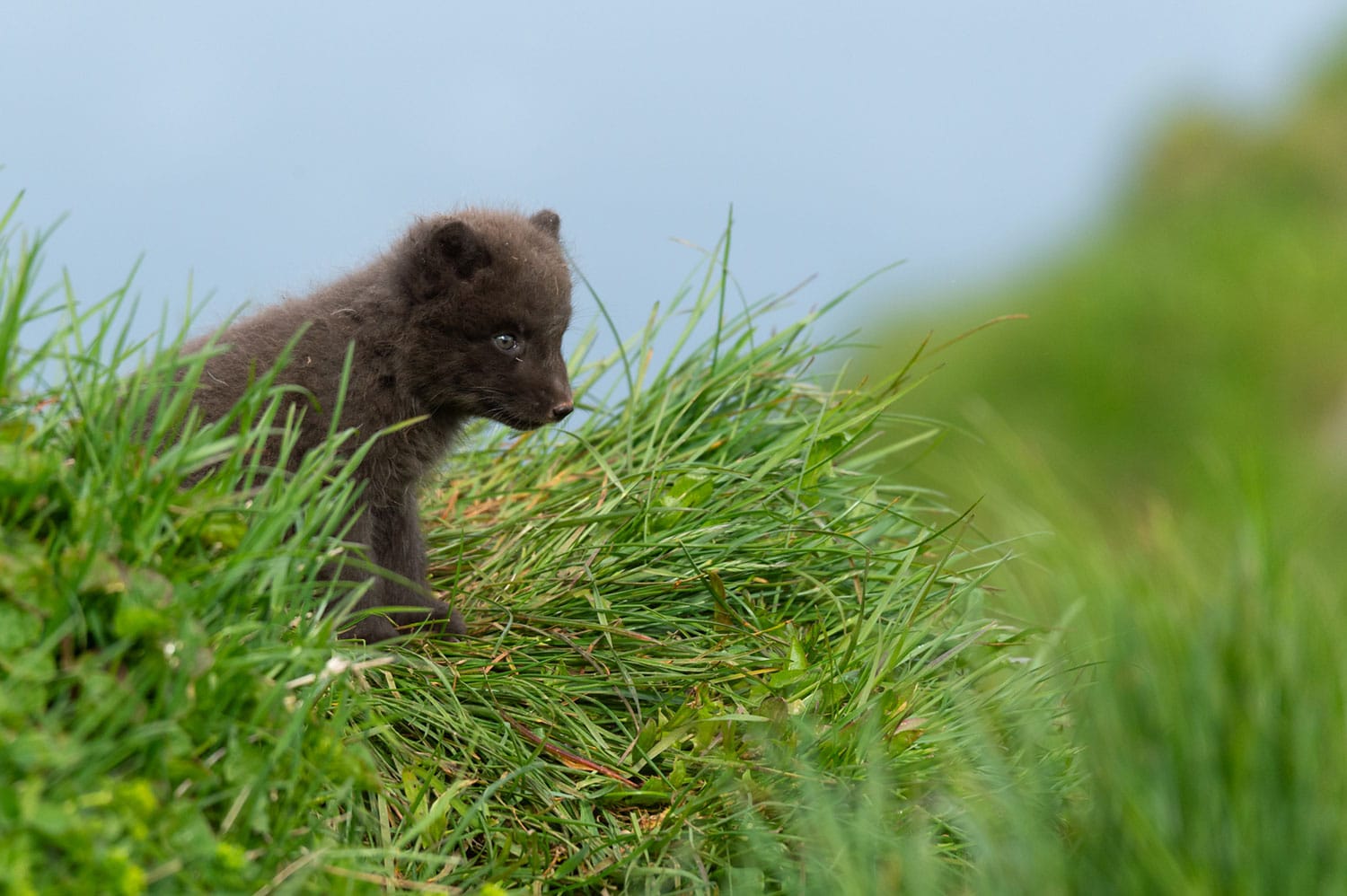
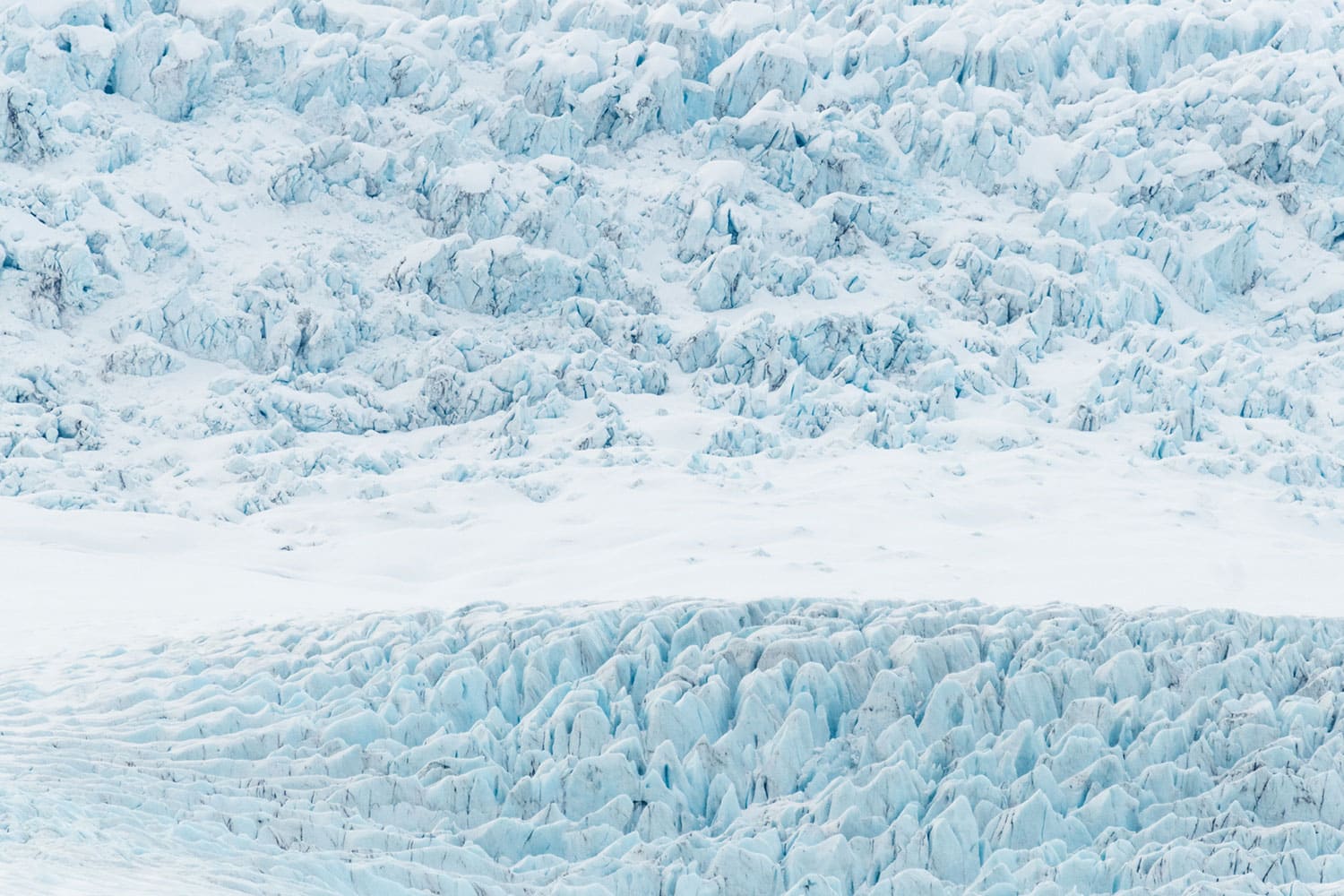
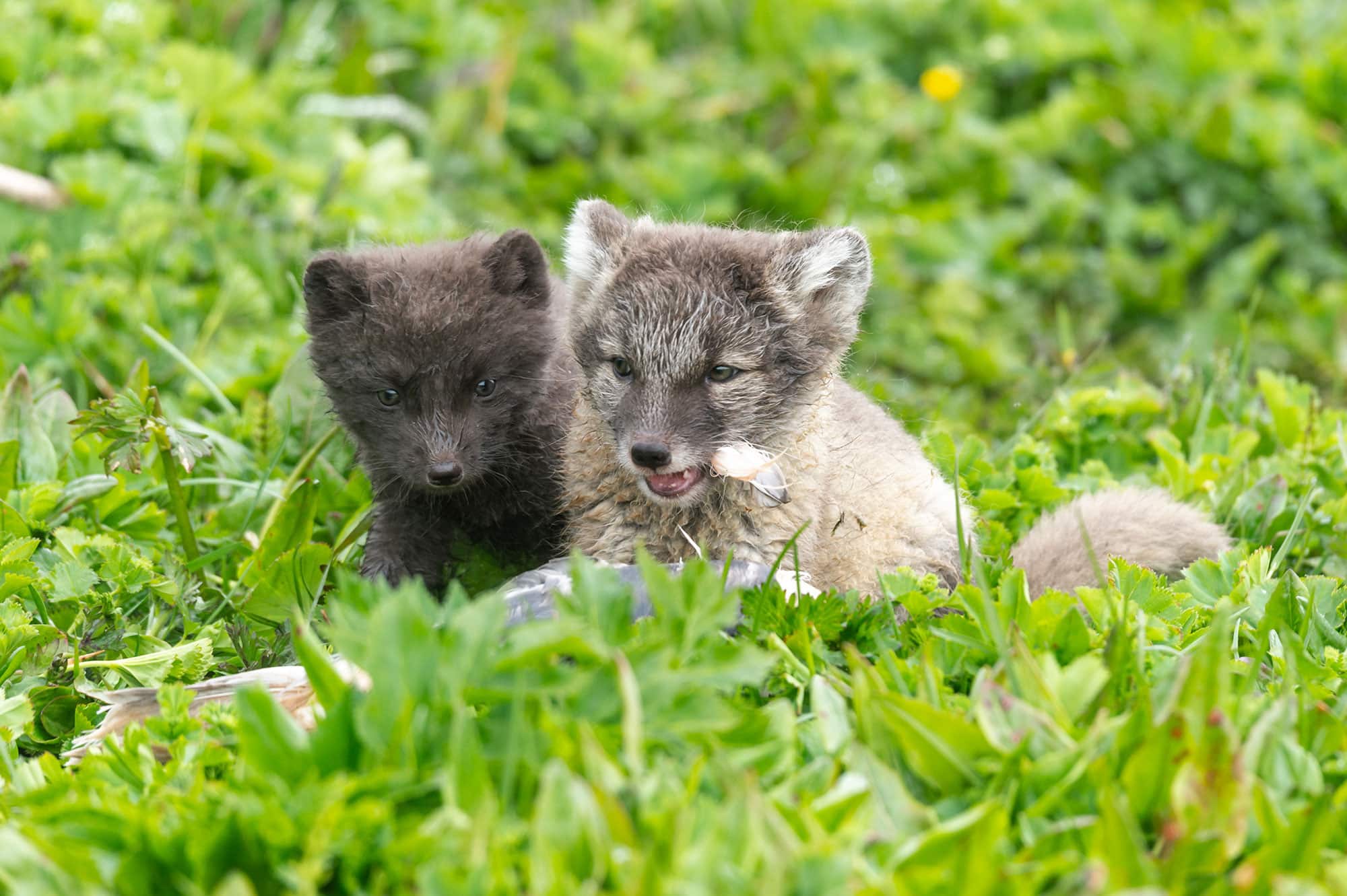
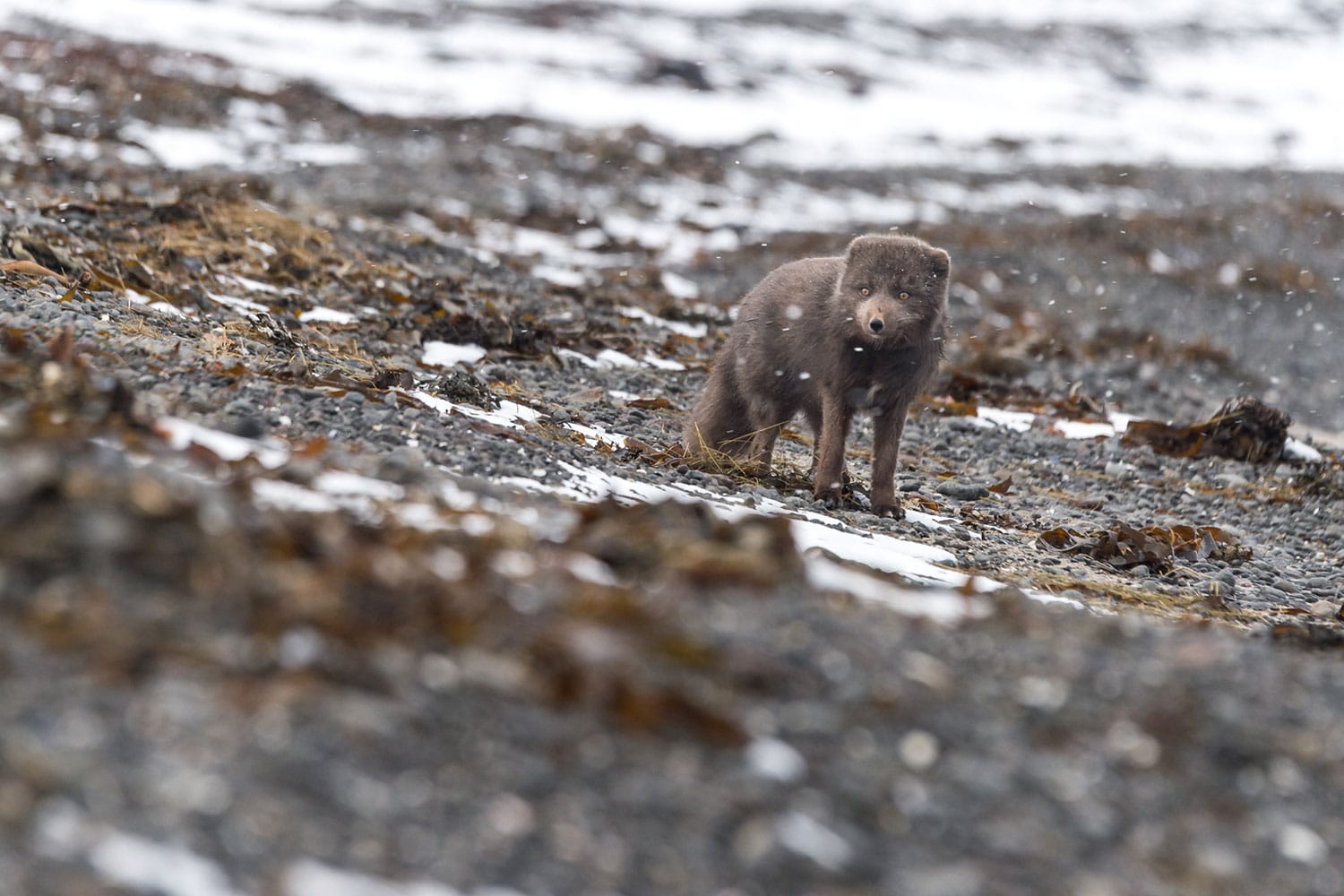
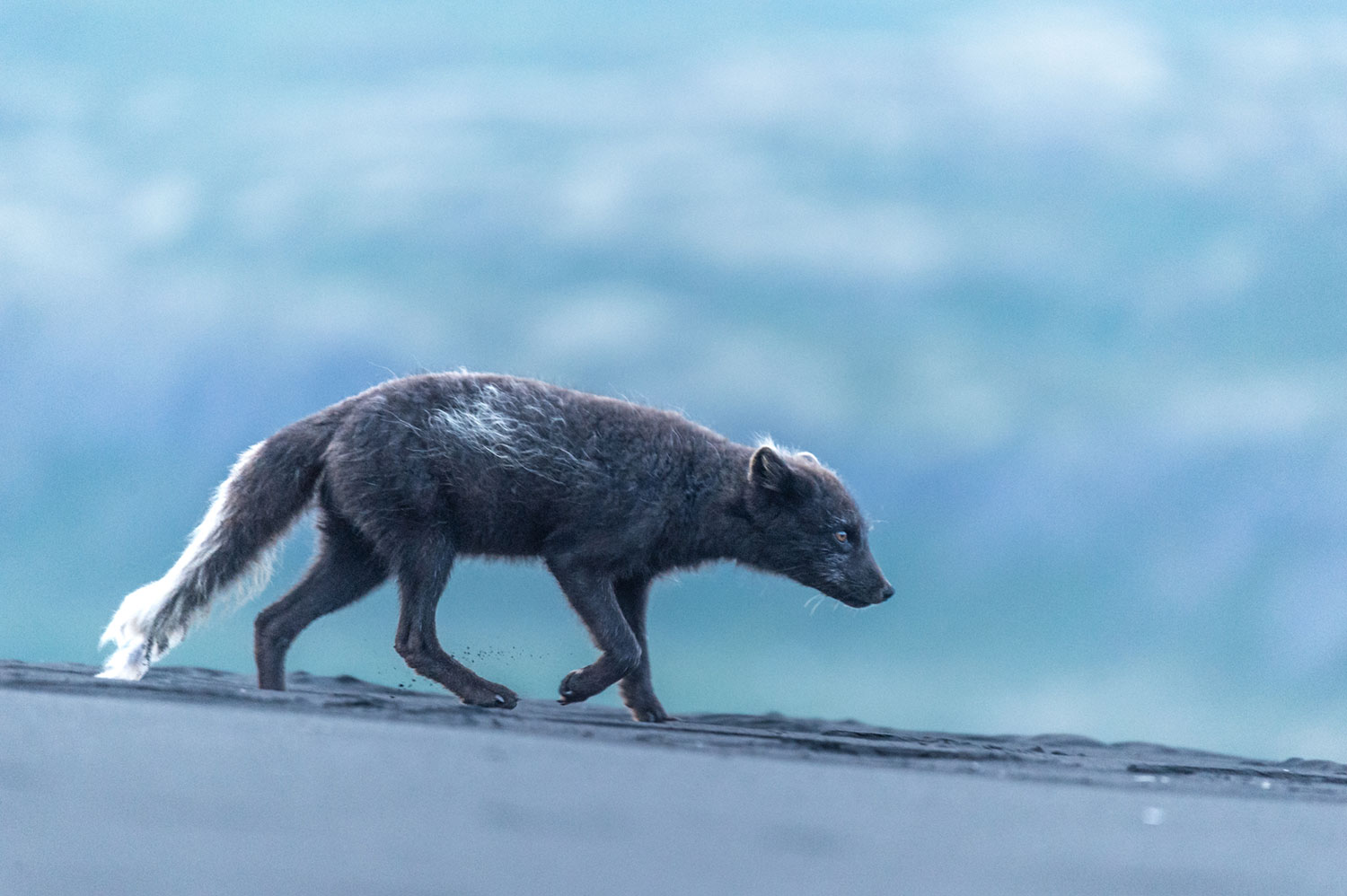
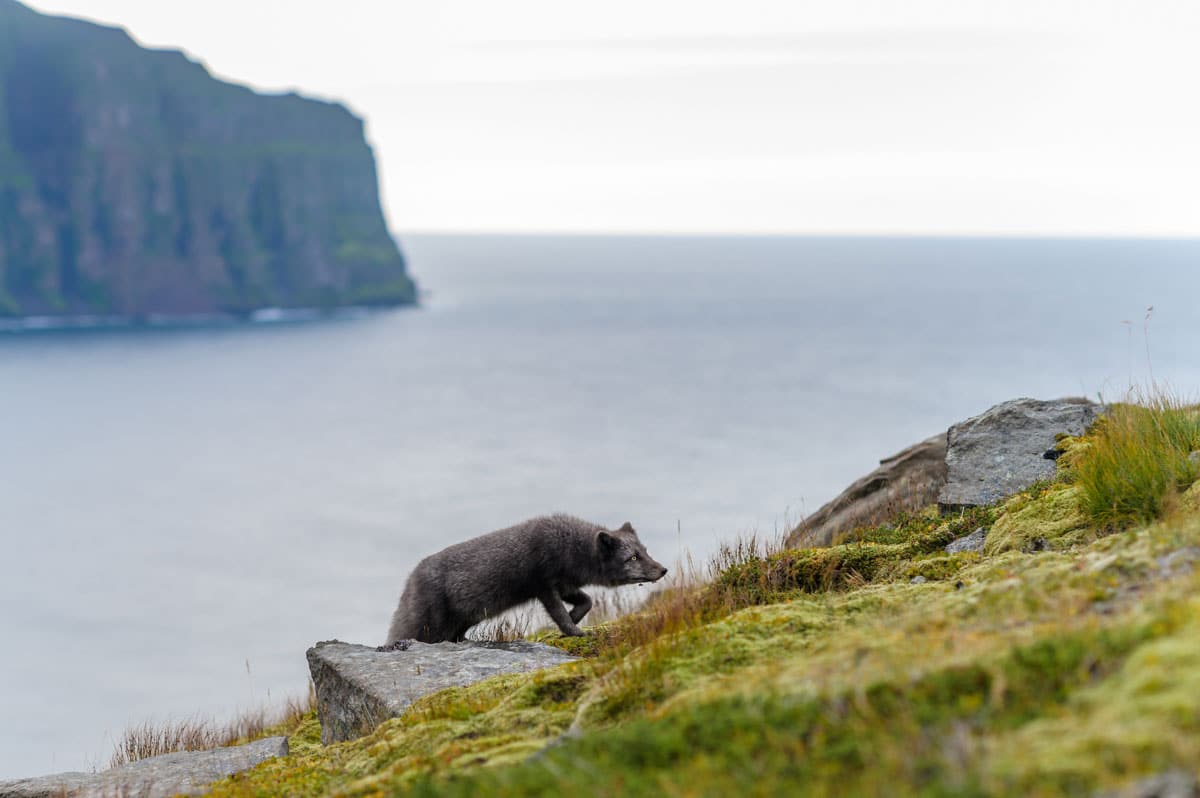
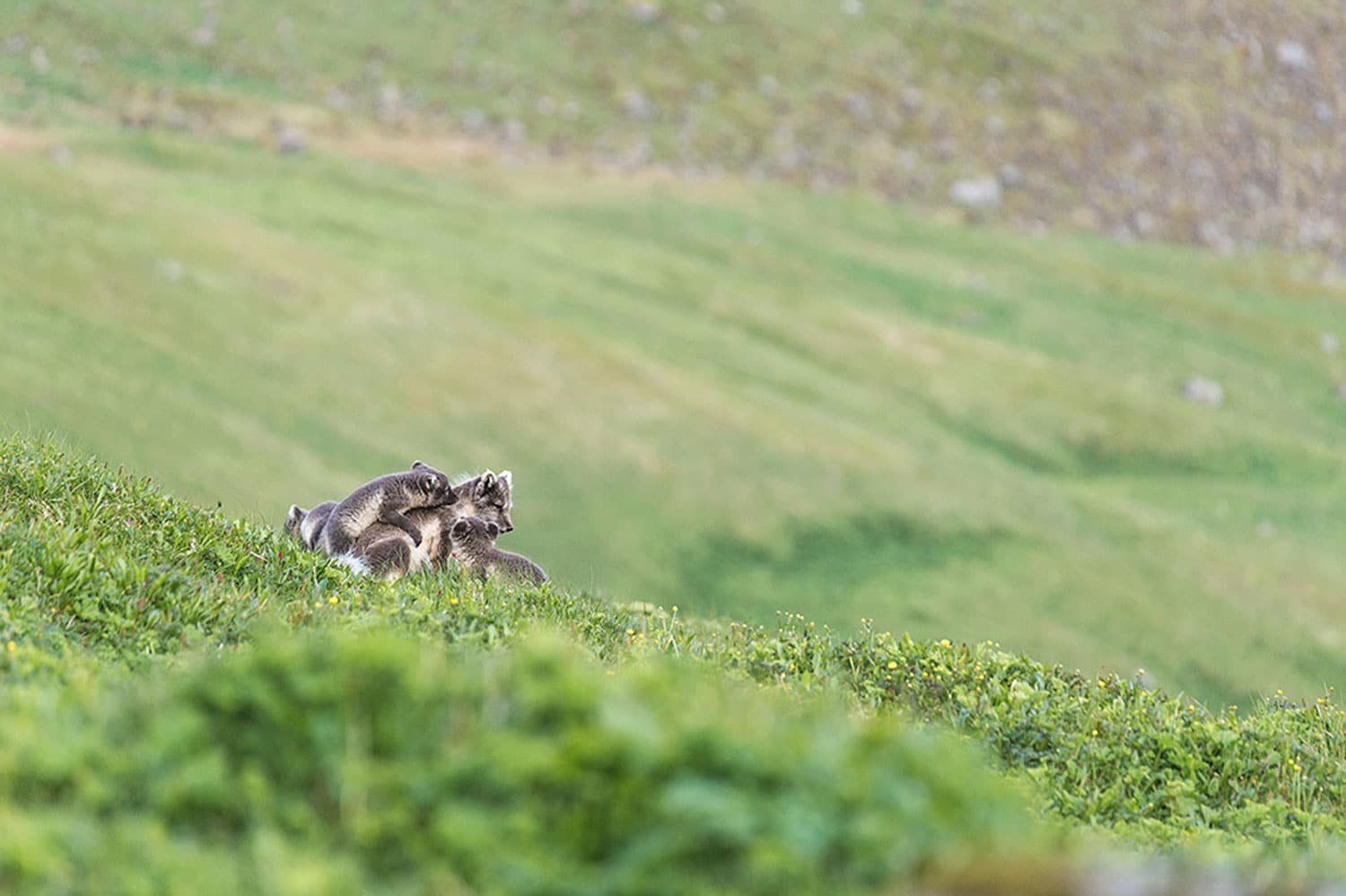
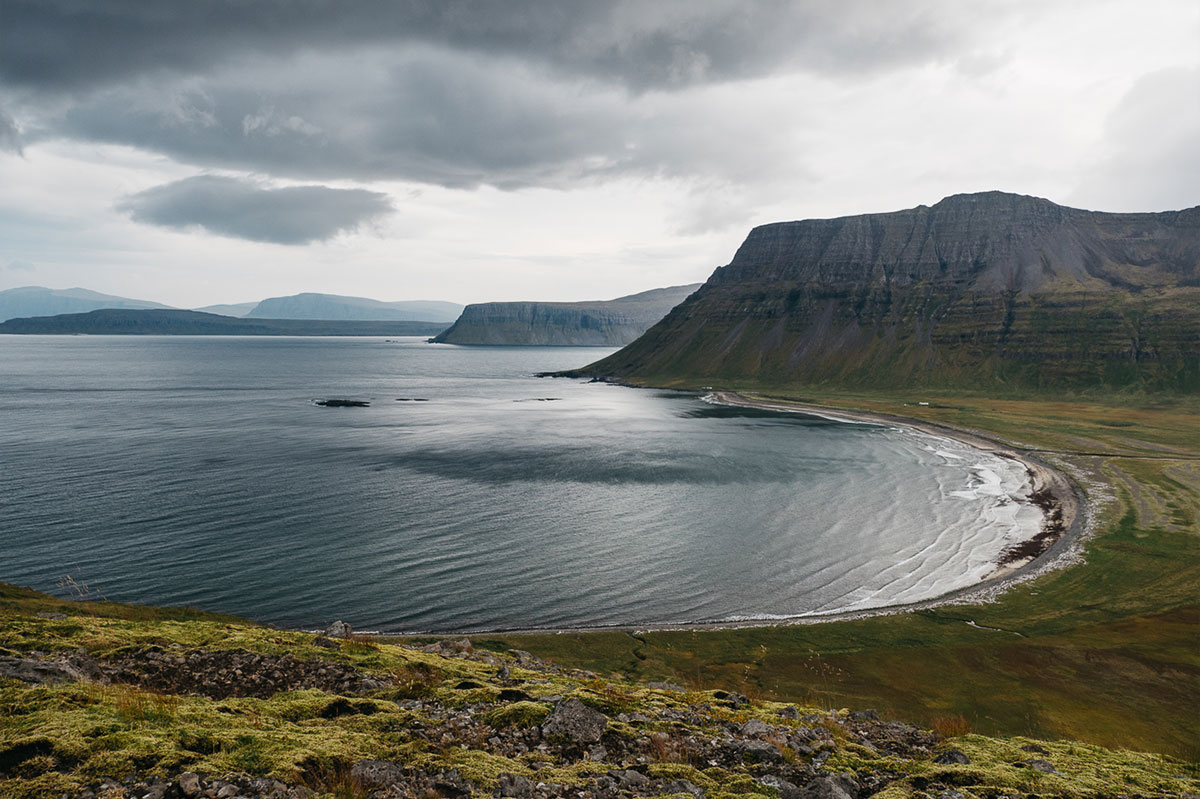
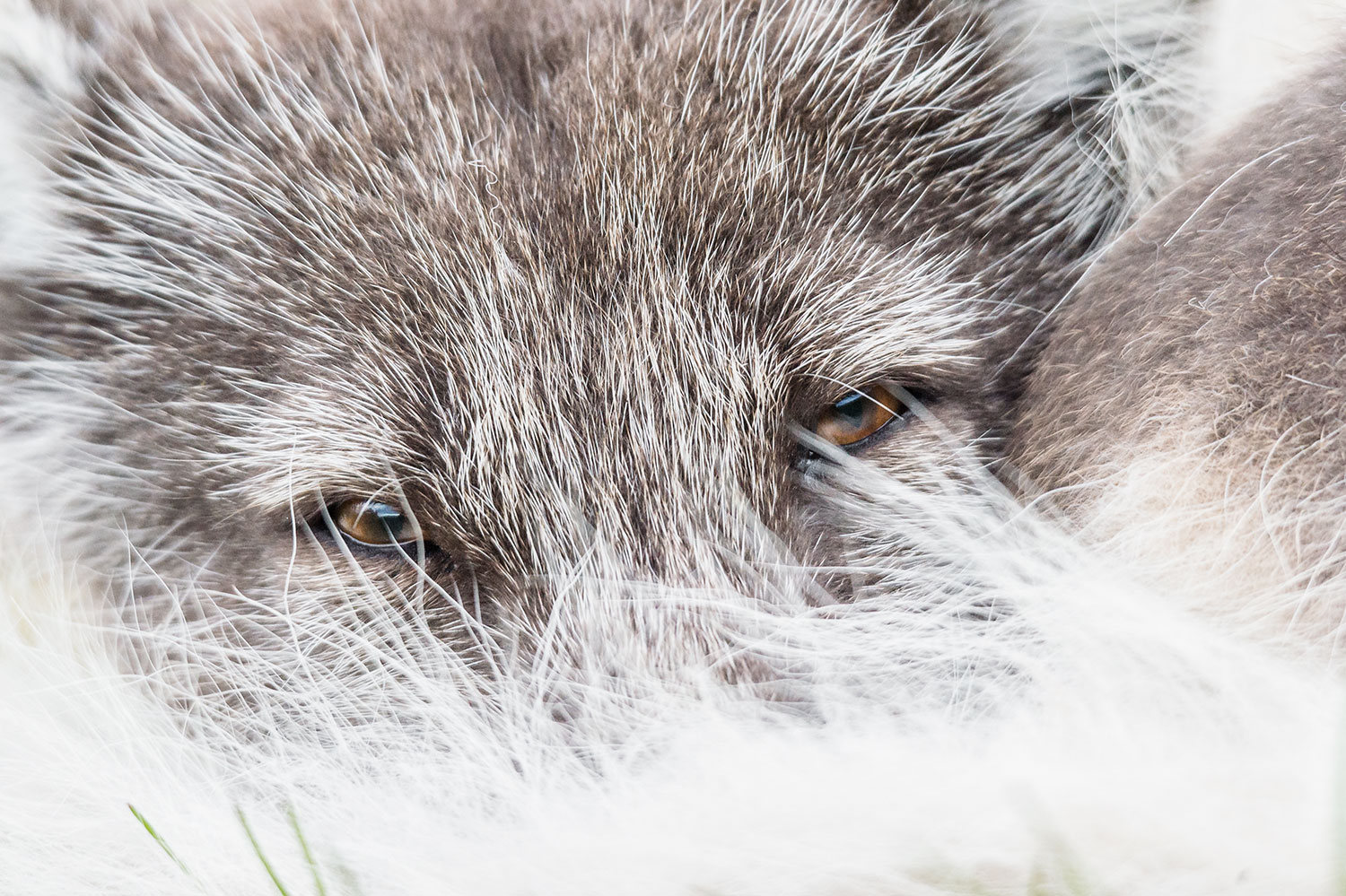
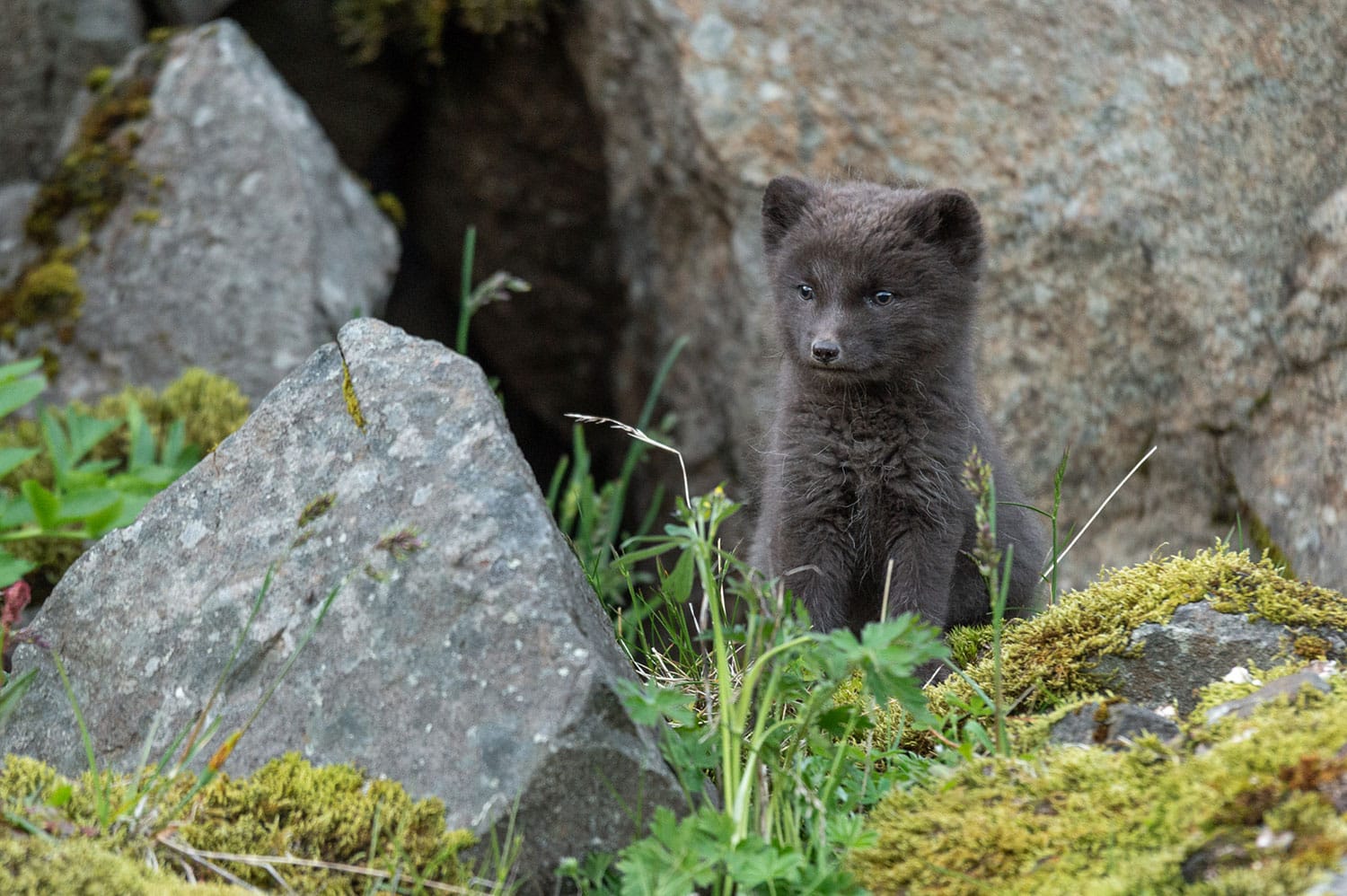
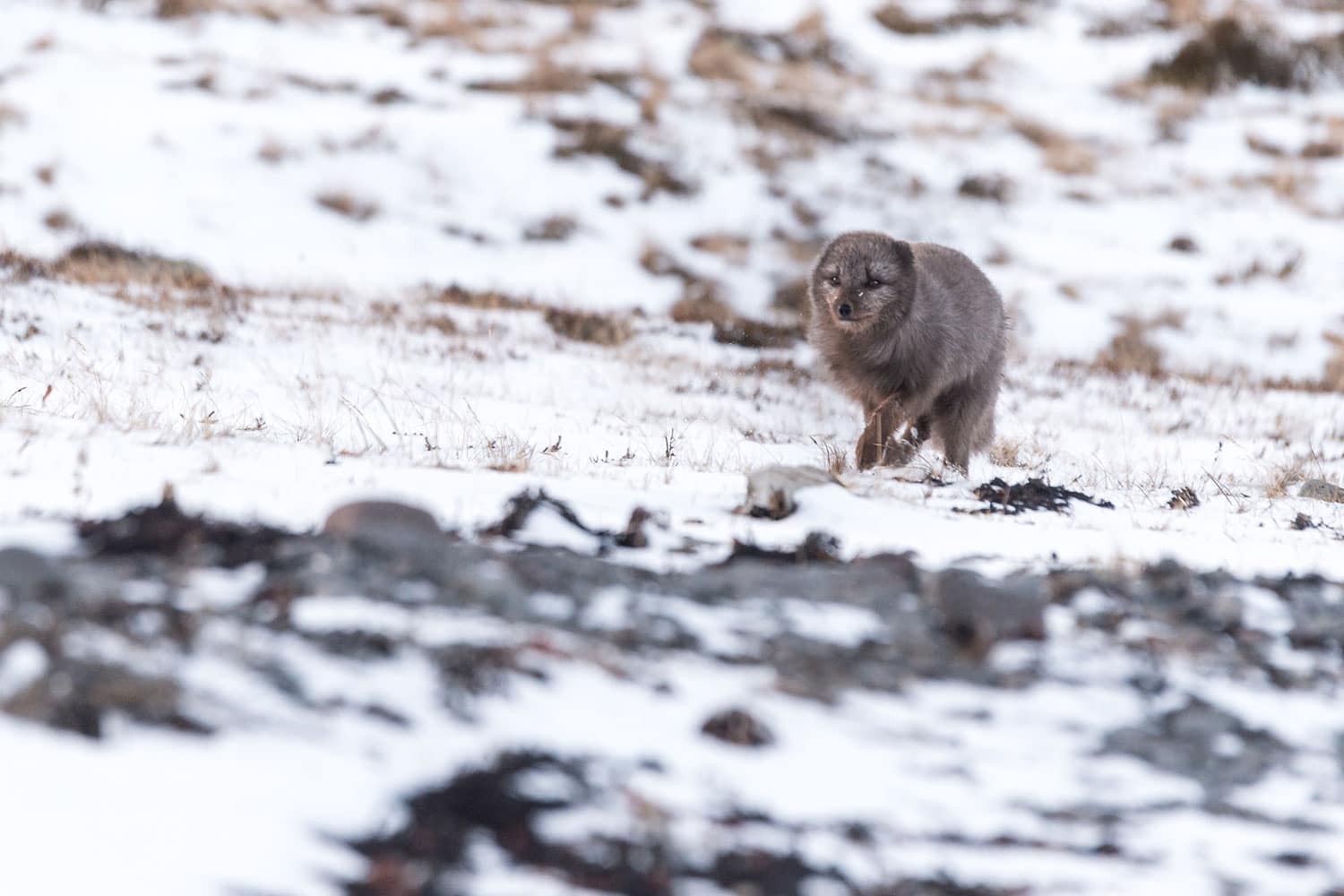
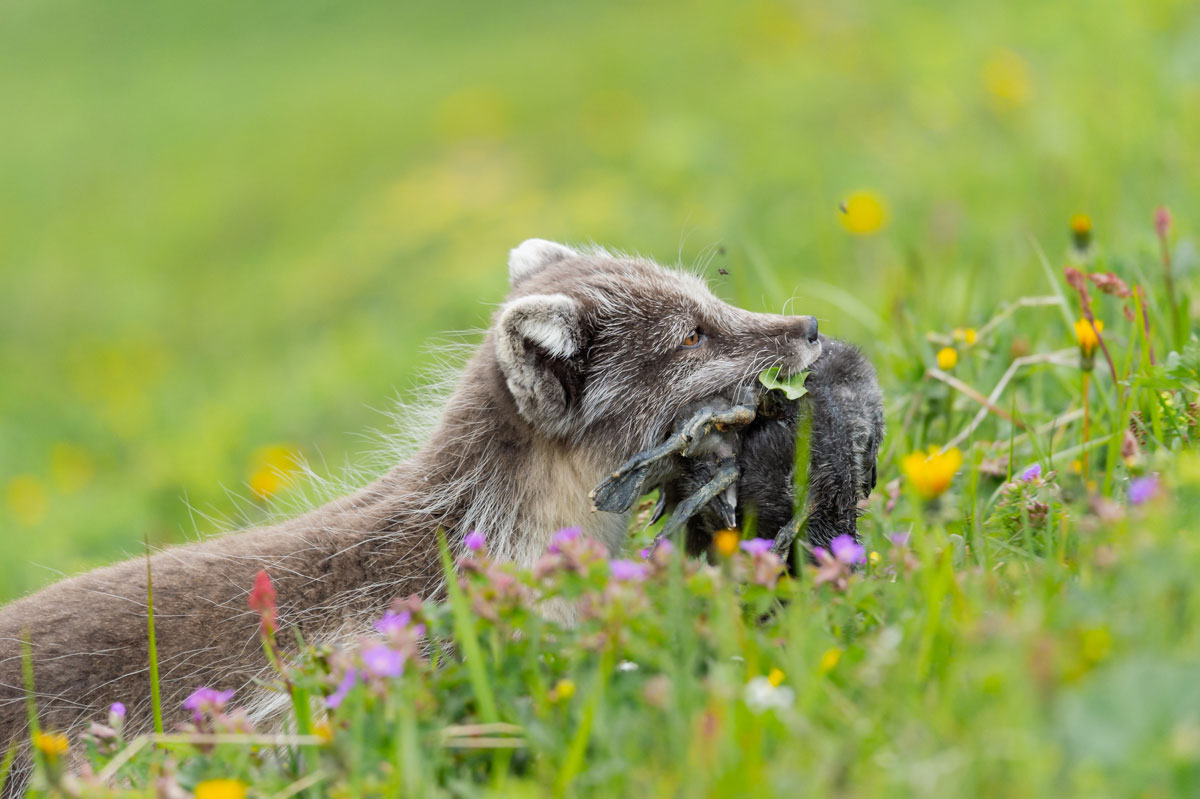
Sorry, the comment form is closed at this time.